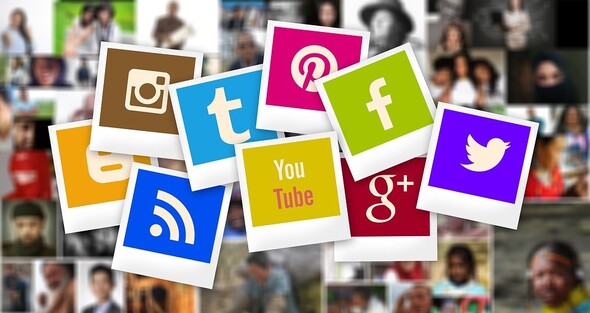Does Language Really Matter in PR?As PR experts around the world continue to explore new and innovative ways to establish and maintain positive relationships between brands and their target audiences what should they really prioritize? Is it the branded merchandise, the logo and other visual representations of the brand? Or is it the language used to communicate with the world? At first glance many may opt for one of the first two elements leaving language behind. After all, how important can language be? Once the recipients understand what is being said all is well right? Wrong! Language is more powerful than many realize and in a field like PR it is a necessity. Language is the Foundation of PR PR is heavily reliant on language. Press releases and digital content for social media, two of the most powerful arsenals in any PR toolkit have language as their foundation. Press releases have to be written before they can be posted or presented and digital content has to follow a script (in the case of video content) or be written (in the case of blogs, social media posts etc.)Undoubtedly therefore, language has to be an important consideration or any PR plan. When Language is placed on the Backburner PR Suffers The last thing any PR professional needs is a language barrier or a sub-par approach to bridging the language barrier triggering miscommunication. This is especially crucial for businesses that operate in multiple cultural contexts. When information is converted, attention to detail is crucial. If the process is flawed then serious problems can arise. Several brands including the top names like Coca Cola and GM have experienced this blunder first-hand and their experiences serve as warning to others. One example occurred in 2009 when HSBC bank’s slogan was incorrectly translated from ‘Assume Nothing’ to ‘Do Nothing’ in several of their international markets. You can just imagine how costly it was to repair this damage. In another translation blunder KFC’s slogan ‘Finger Lickin’ Good’ became the cringe worthy ‘Eat Your Fingers Off’ for Chinese market. The conversion of content into different languages is extremely popular. The service is in such high demand that it has led to the establishment of several successful businesses. The fact that transcreation, translation and localization have become such a crucial aspect of corporate content creation and communication strategies is an indicator of just how important language is in business communication. Businesses do not simply use language, they manipulate it to achieve their goals. Content can be designed to be persuasive, informative, soothing, comforting or humorous depending on what the brand wishes to achieve. The average PR professional will be able to create content that delivers the brand’s message, but the superior PR expert will shape that content into a tool that goes beyond delivering a message. Expert PR professionals can use language to evoke emotions in the audience and trigger action. This action could be subscribing to a page, mailing list or channel or making a purchase. While English remains the world’s dominant lingua franca and the language of power especially in the corporate world, today’s PR expert needs to be able to tap into the other languages that the brand’s partners and customers use. Language is perhaps the most powerful tool for the modern PR expert. PR is primarily communication. This communication is used to build, protect and improve relationships ultimately leading to improved sales figures in the long run. The PR professional must therefore get it right at the language level first, in order to reap success. In short, language is a key element in public relations. Read Now  As PR experts around the world continue to explore new and innovative ways to establish and maintain positive relationships between brands and their target audiences what should they really prioritize? Is it the branded merchandise, the logo and other visual representations of the brand? Or is it the language used to communicate with the world? At first glance many may opt for one of the first two elements leaving language behind. After all, how important can language be? Once the recipients understand what is being said all is well right? Wrong! Language is more powerful than many realize and in a field like PR it is a necessity. Language is the Foundation of PR PR is heavily reliant on language. Press releases and digital content for social media, two of the most powerful arsenals in any PR toolkit have language as their foundation. Press releases have to be written before they can be posted or presented and digital content has to follow a script (in the case of video content) or be written (in the case of blogs, social media posts etc.)Undoubtedly therefore, language has to be an important consideration or any PR plan. When Language is placed on the Backburner PR Suffers The last thing any PR professional needs is a language barrier or a sub-par approach to bridging the language barrier triggering miscommunication. This is especially crucial for businesses that operate in multiple cultural contexts. When information is converted, attention to detail is crucial. If the process is flawed then serious problems can arise. Several brands including the top names like Coca Cola and GM have experienced this blunder first-hand and their experiences serve as warning to others. One example occurred in 2009 when HSBC bank’s slogan was incorrectly translated from ‘Assume Nothing’ to ‘Do Nothing’ in several of their international markets. You can just imagine how costly it was to repair this damage. In another translation blunder KFC’s slogan ‘Finger Lickin’ Good’ became the cringe worthy ‘Eat Your Fingers Off’ for Chinese market. The conversion of content into different languages is extremely popular. The service is in such high demand that it has led to the establishment of several successful businesses. The fact that transcreation, translation and localization have become such a crucial aspect of corporate content creation and communication strategies is an indicator of just how important language is in business communication. Businesses do not simply use language, they manipulate it to achieve their goals. Content can be designed to be persuasive, informative, soothing, comforting or humorous depending on what the brand wishes to achieve. The average PR professional will be able to create content that delivers the brand’s message, but the superior PR expert will shape that content into a tool that goes beyond delivering a message. Expert PR professionals can use language to evoke emotions in the audience and trigger action. This action could be subscribing to a page, mailing list or channel or making a purchase. While English remains the world’s dominant lingua franca and the language of power especially in the corporate world, today’s PR expert needs to be able to tap into the other languages that the brand’s partners and customers use. Language is perhaps the most powerful tool for the modern PR expert. PR is primarily communication. This communication is used to build, protect and improve relationships ultimately leading to improved sales figures in the long run. The PR professional must therefore get it right at the language level first, in order to reap success. In short, language is a key element in public relations. Comments are closed.
|
- Home
- Team
- Tik Tok
- Instagram & FB Verification
- Verified Instagram Accounts
- Instagram Usernames & Brokerage
- Verified Instagram Username Change
- Celebrity Instagram Growth Giveaways
- Verified Instagram Accounts With Desired Username
- Recover Disabled or Hacked Accounts
- Linkedin Username Claim Service
- Acquire Premium Accounts
- YouTube Verification
- Instagram Ban Service
- Twitter Verification
- Become a Forbes Contributor
- Write For Entrepreneur.com
- Verified Twitter Username Change
- Verified Facebook Page With Desired Username
- Instagram Growth
- Reputation Management
- Snapchat Verification
- Famous Birthdays
- Wikipedia Page Creation
- Google Knowledge Panel
- Spotify promotion
- Google News Approval Service
- PR for Influencers & Content Creators
- PR for Brands & Startups
- PR for Crypto, Blockchain & DeFi Companies
- PR for Musicians & Artists
- Partner Program
- Careers
- Blog Articles
- Clients
- Contact
Contact
Only Official Email Address [email protected]Always email directly via our official email to make sure you're liaising with us!
|
|




